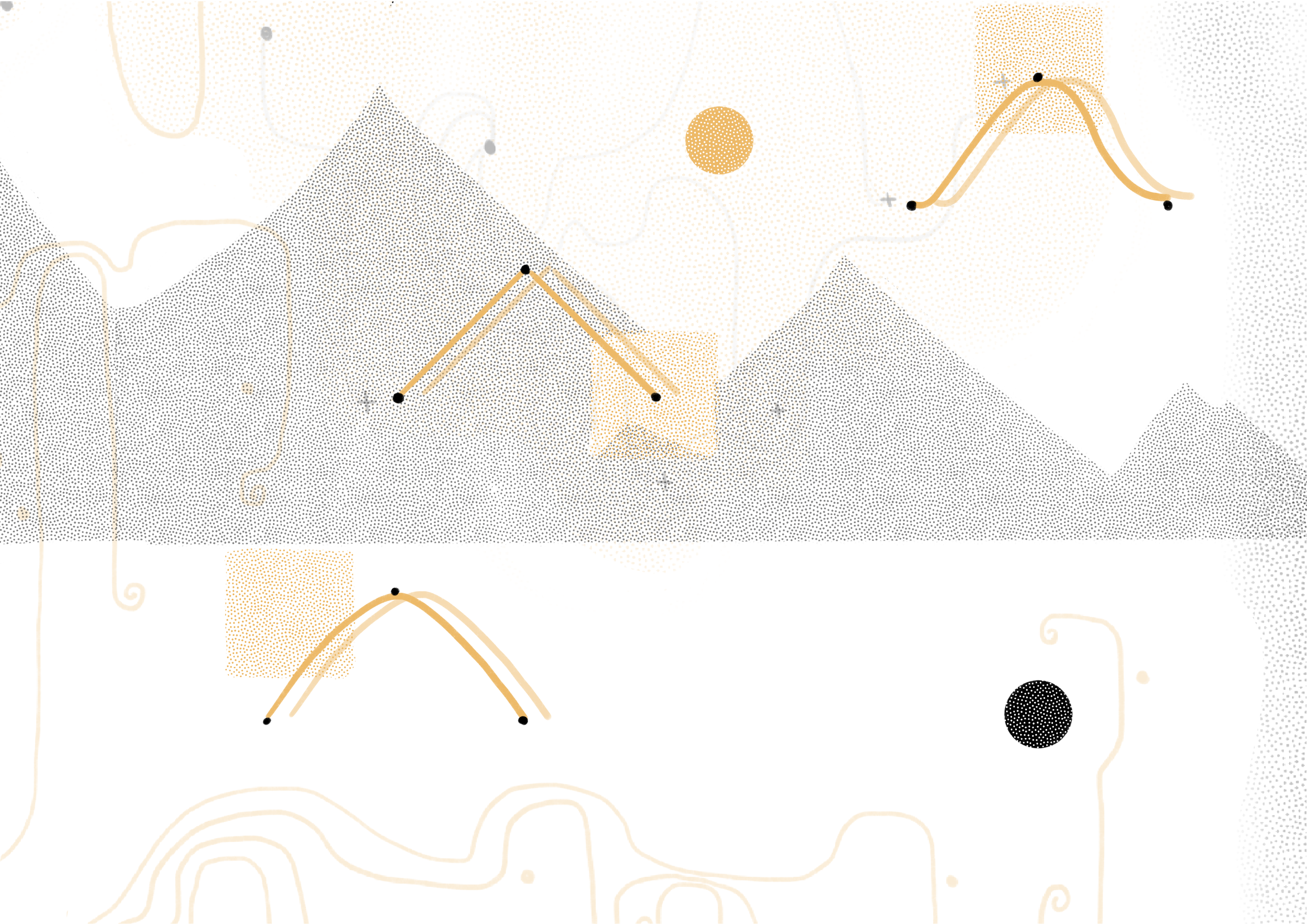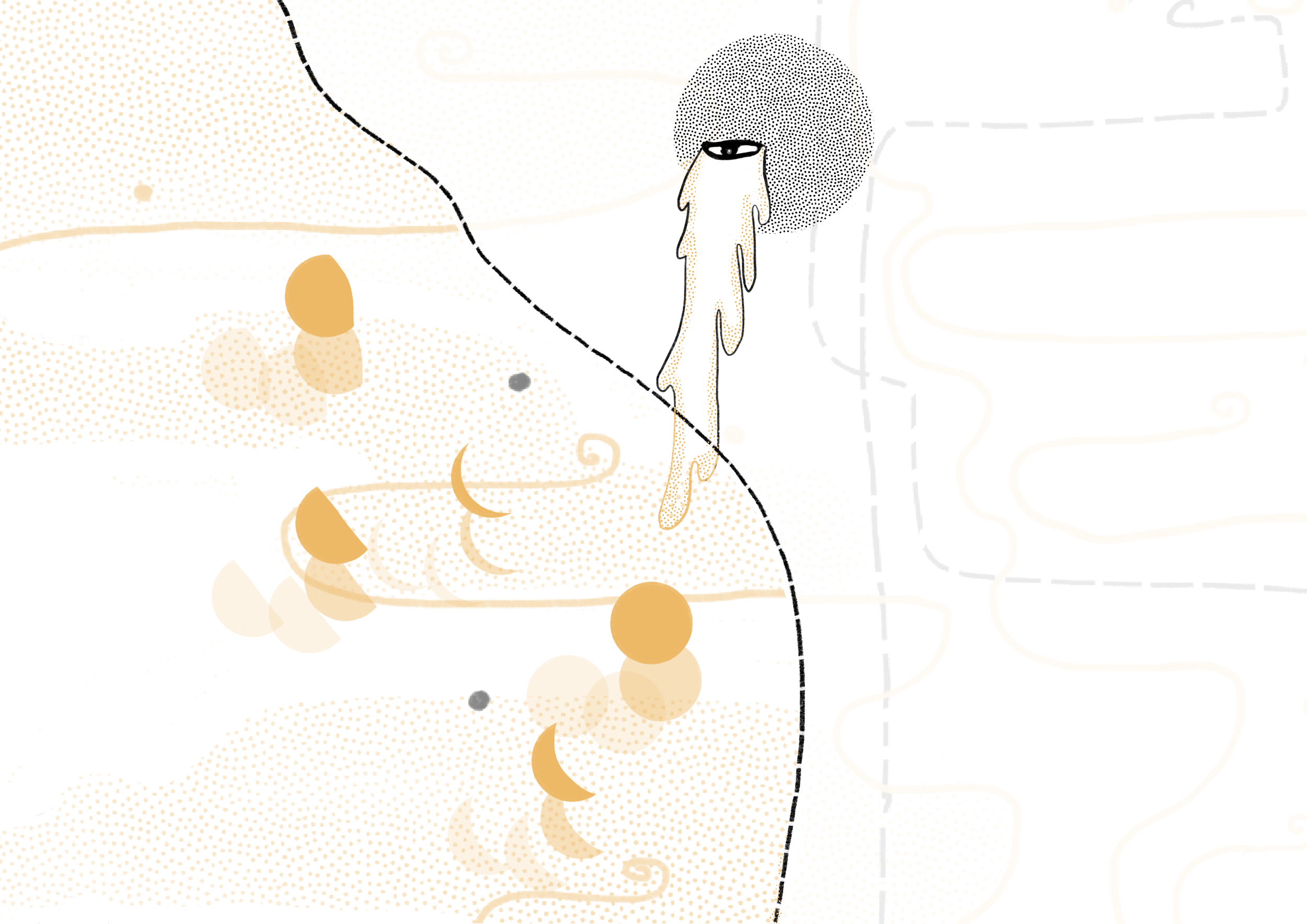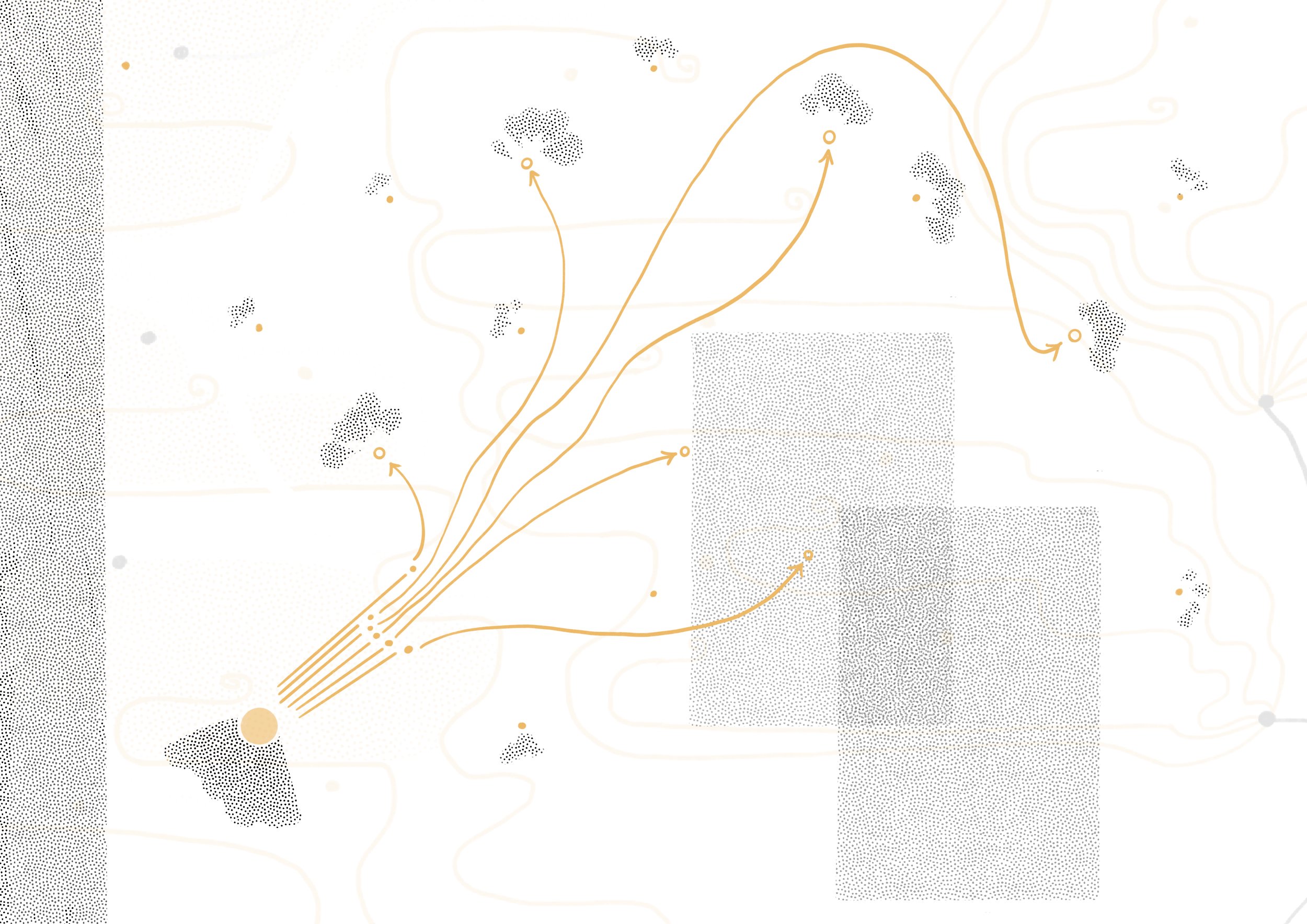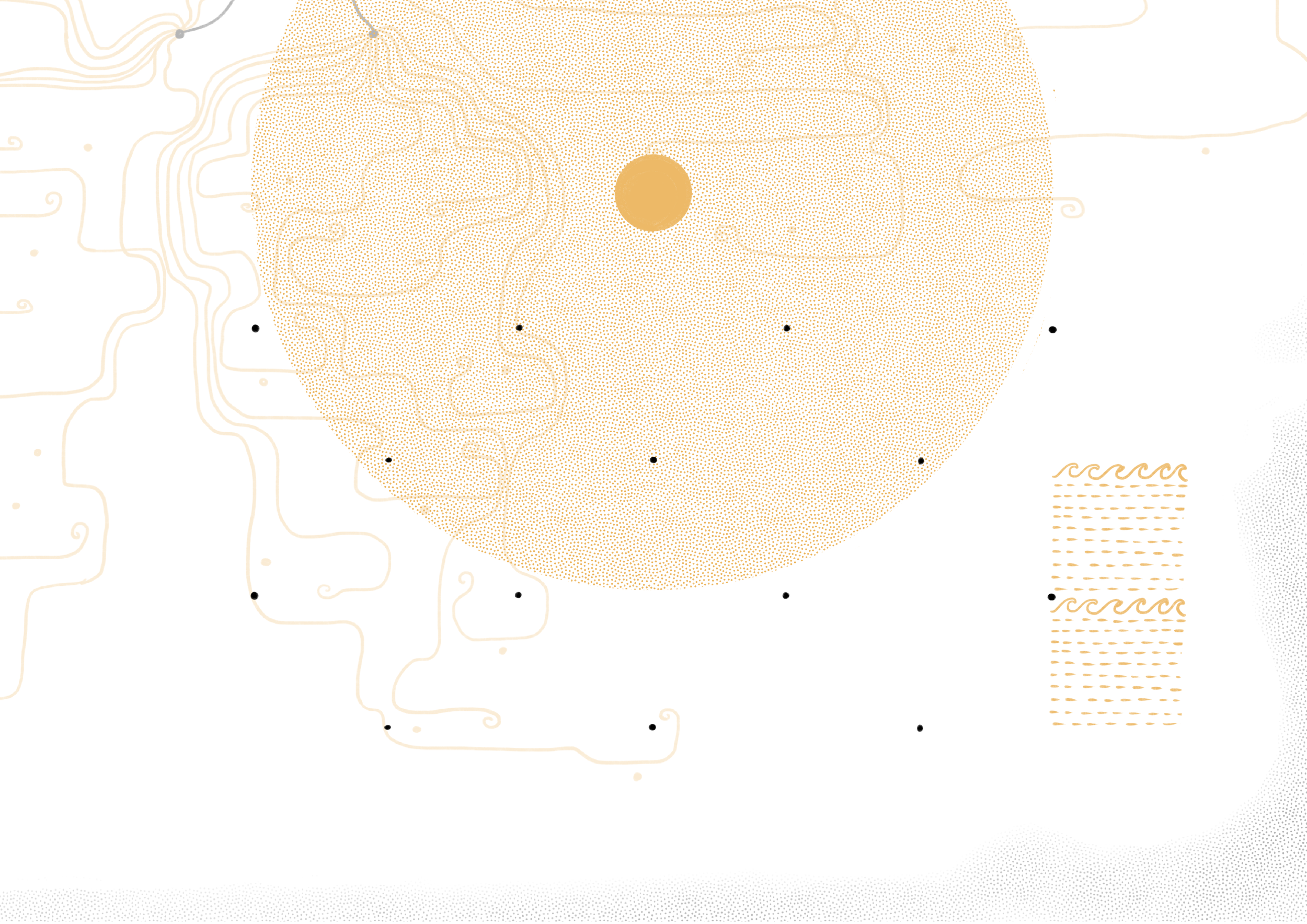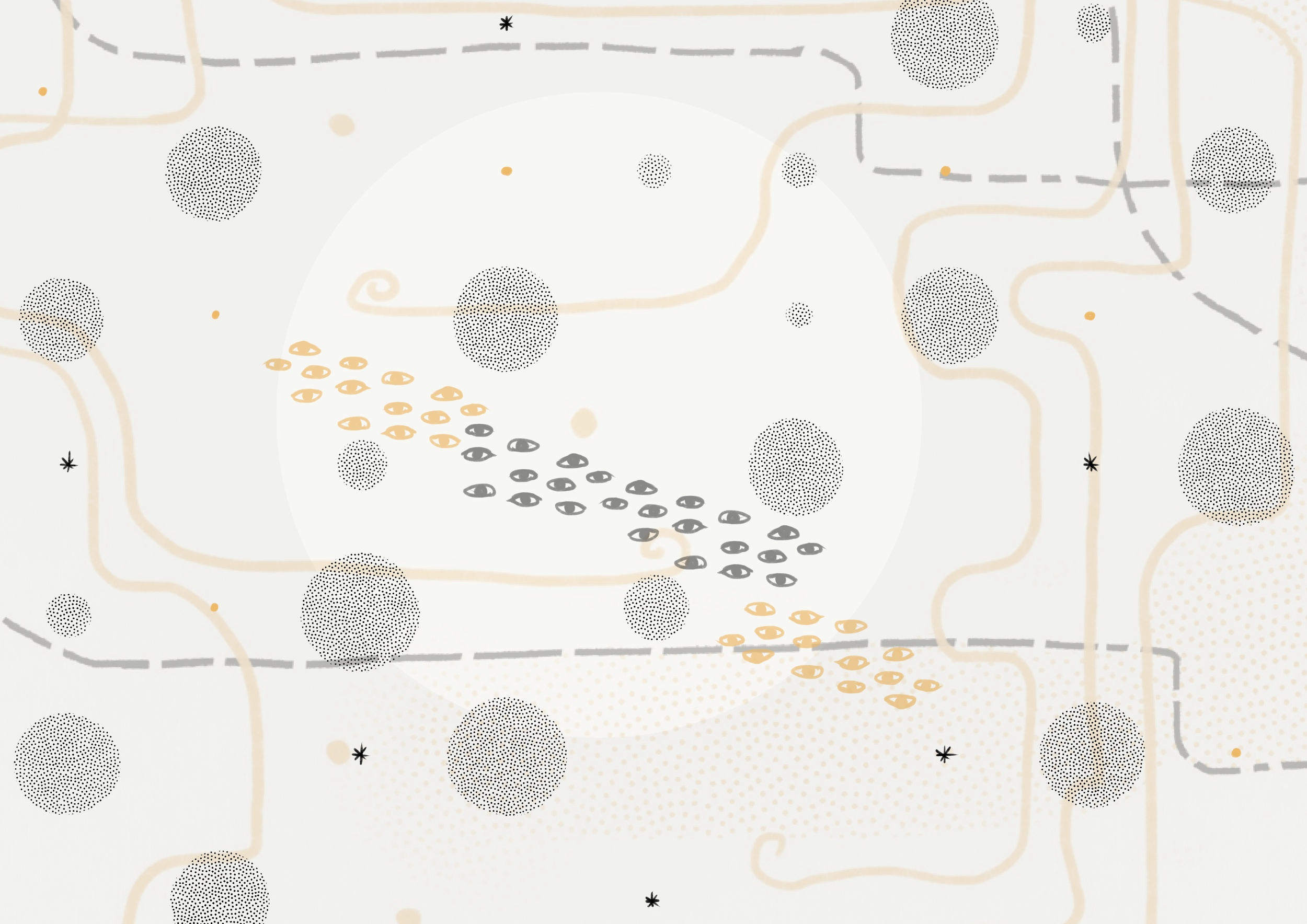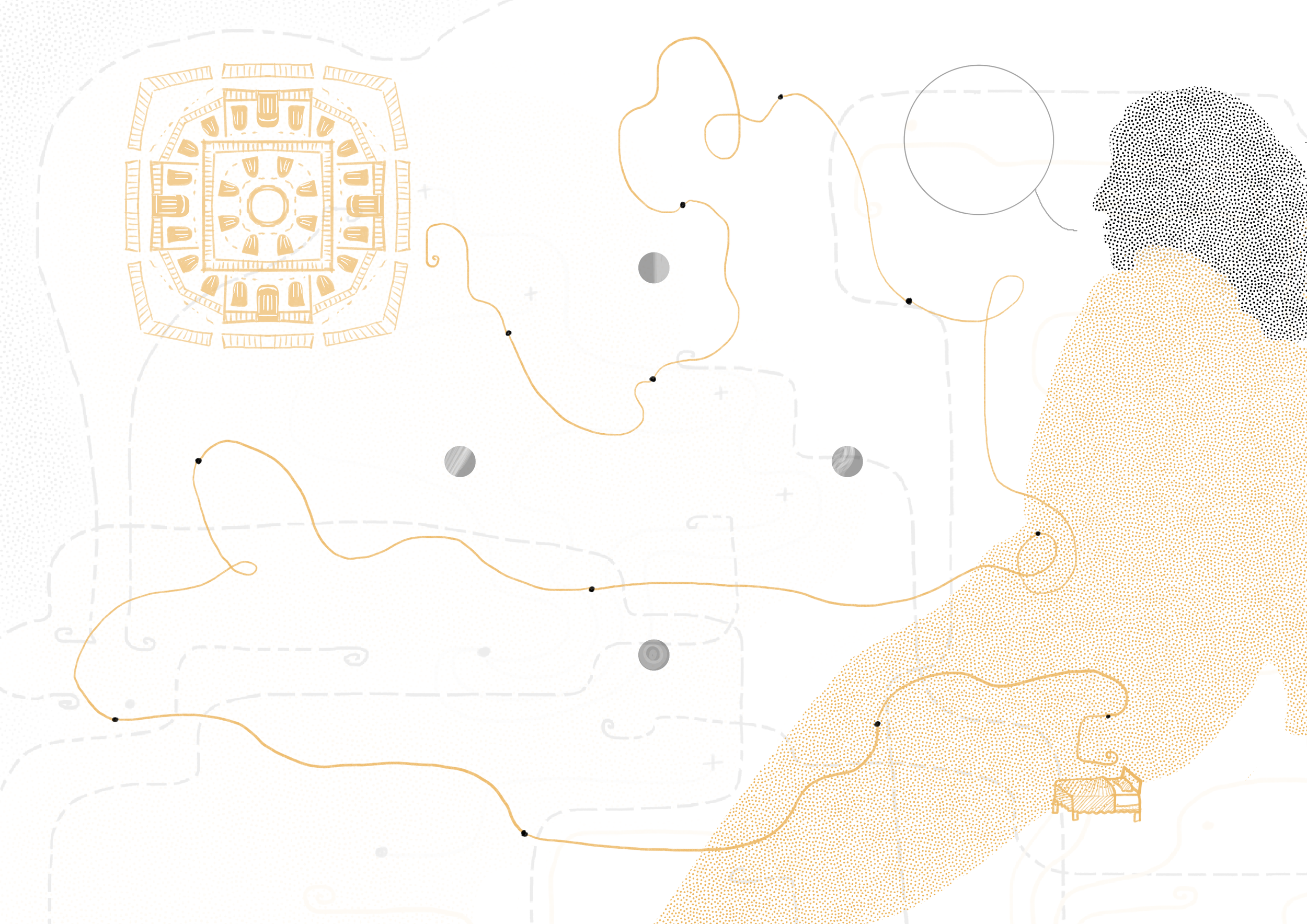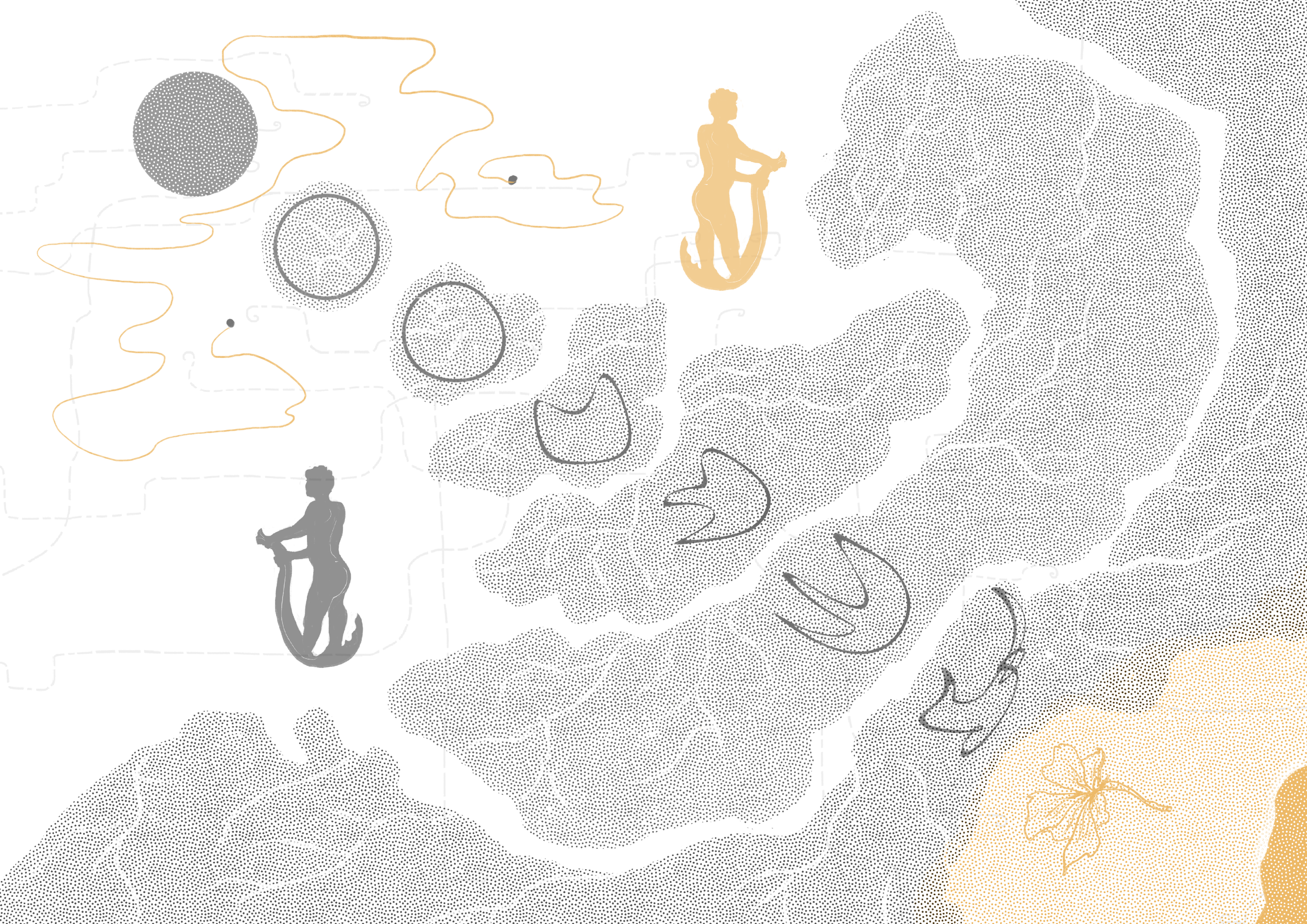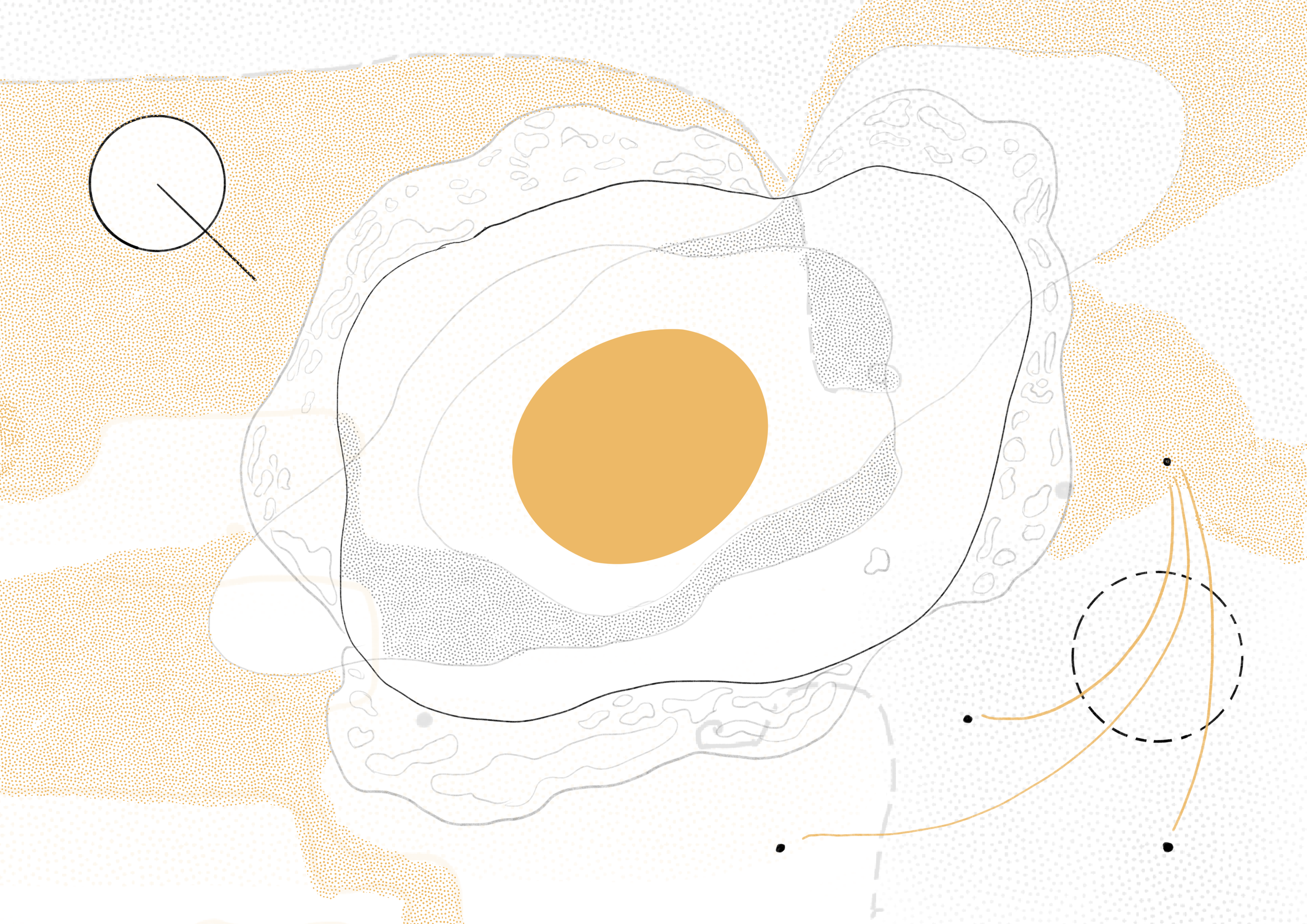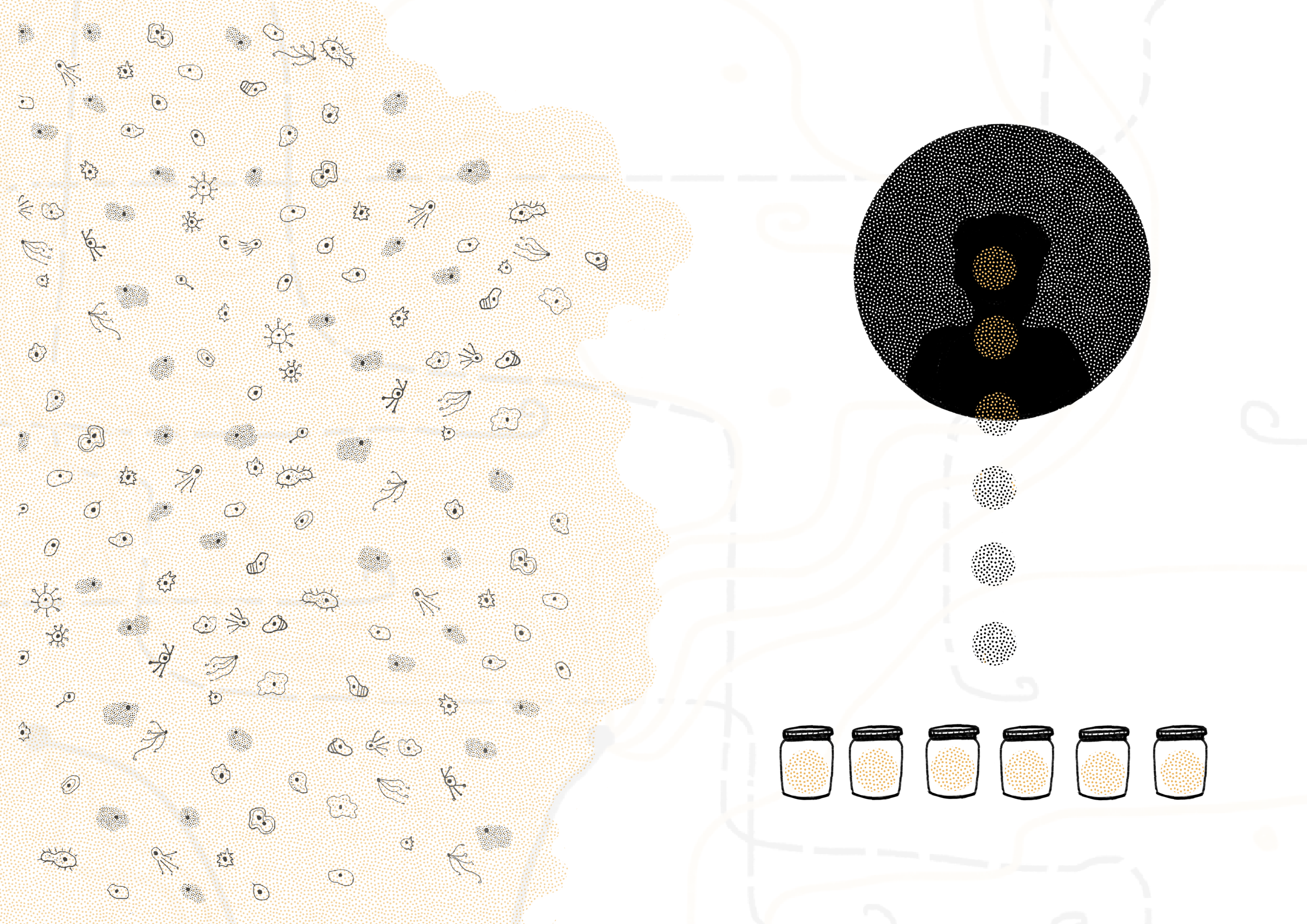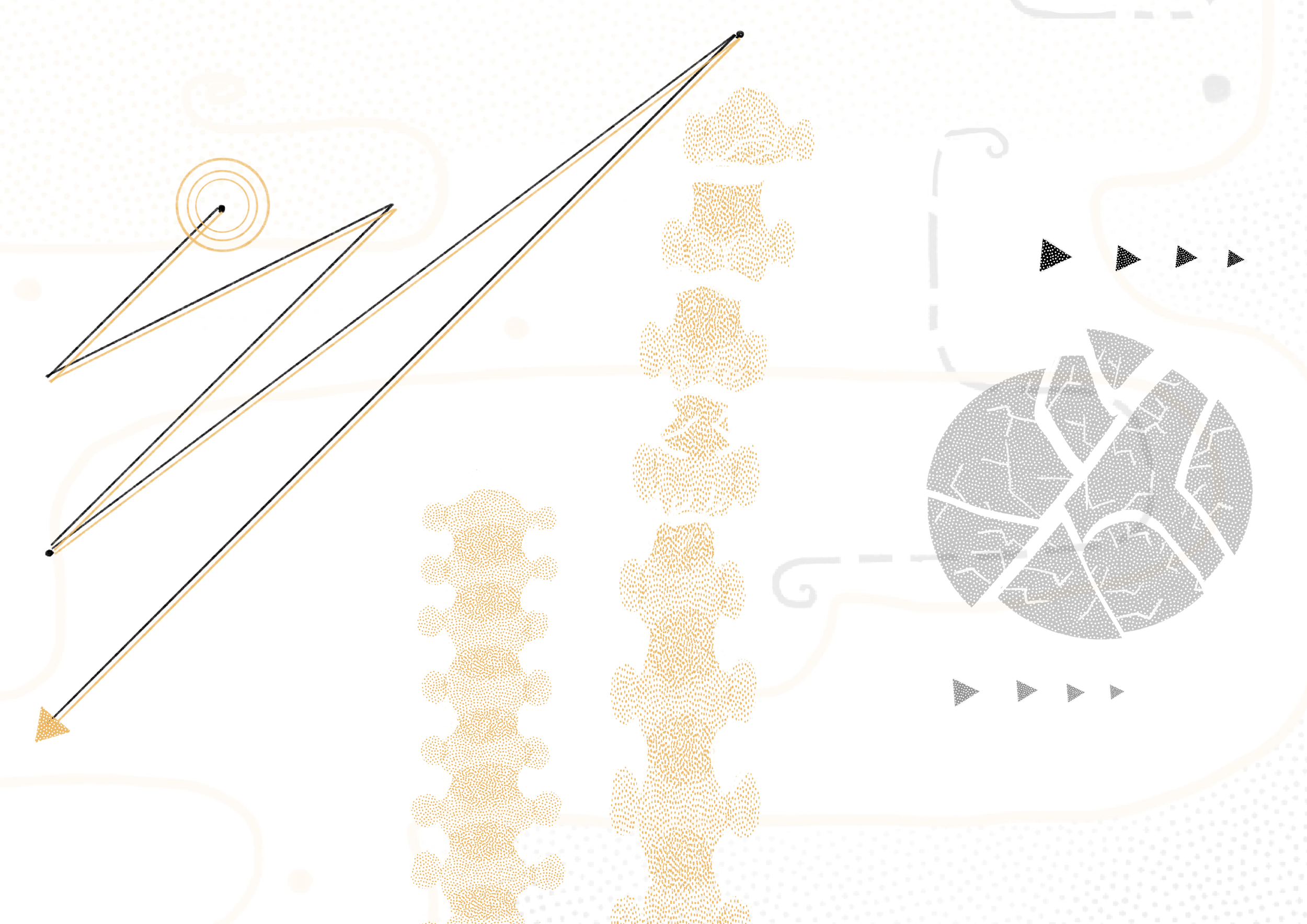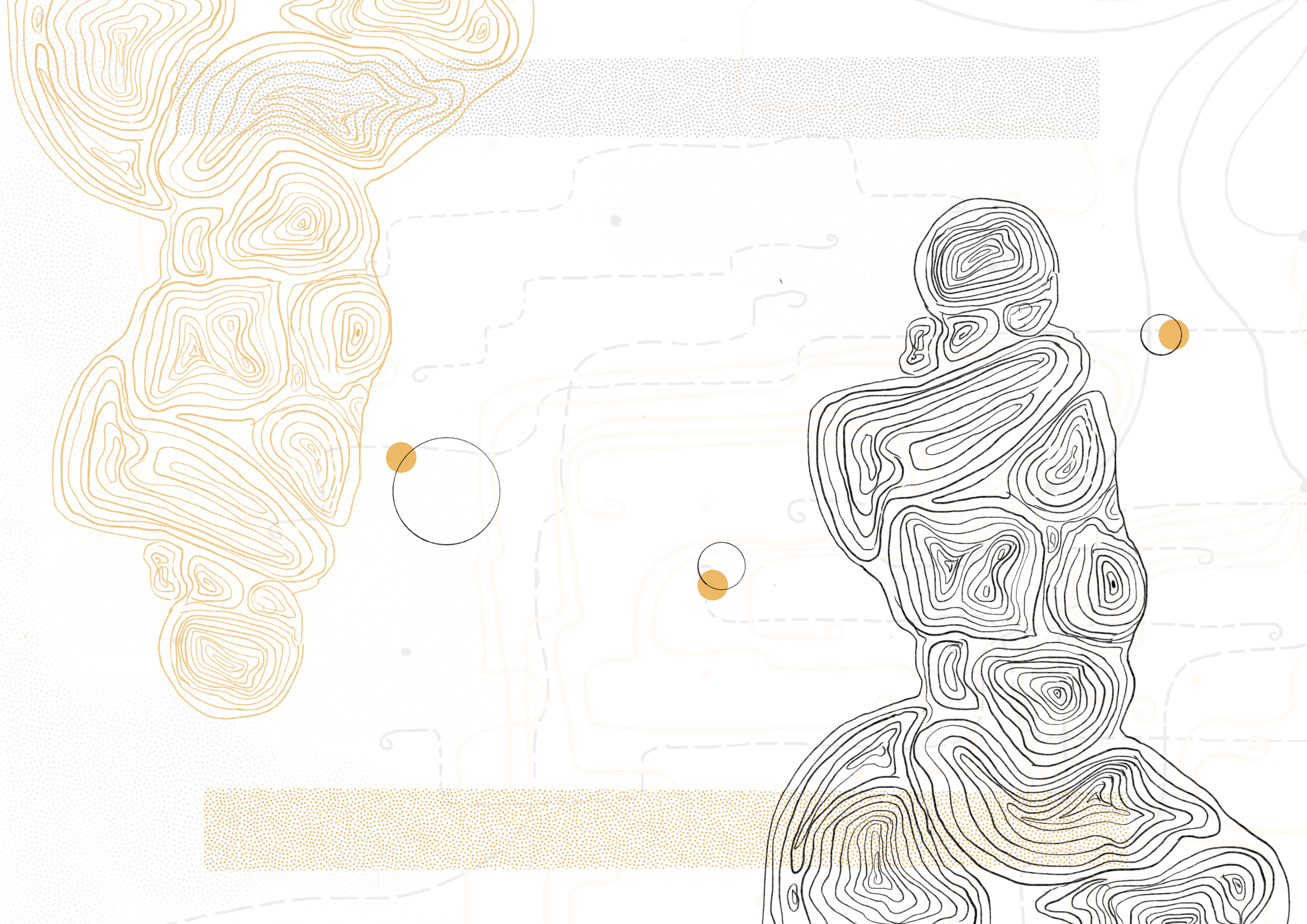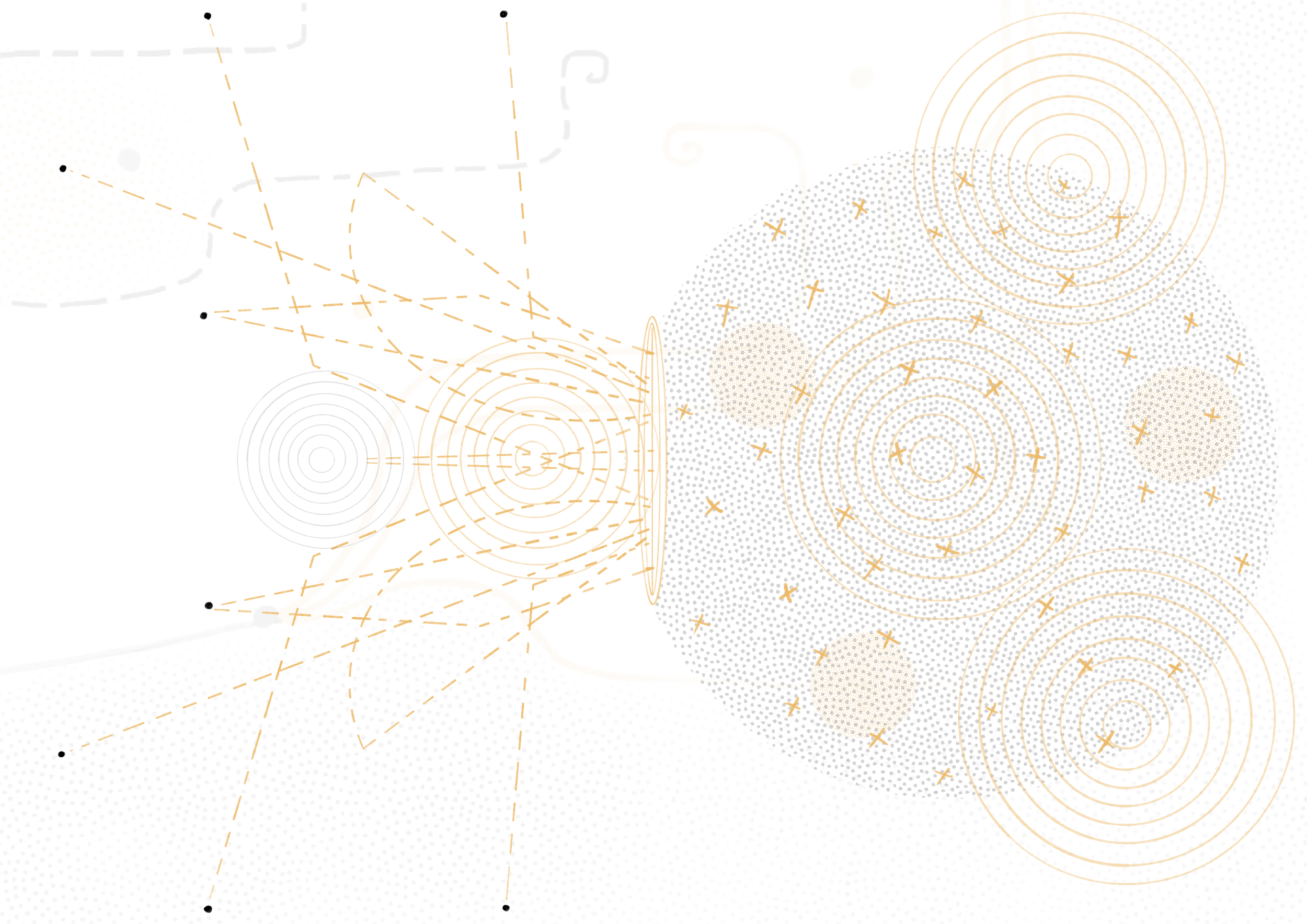How to Do a Downward Facing Dog?
JOHANNA HEUSER
Trigger Warning: This text includes mentions of sexual assault and physical, sexual, emotional and verbal abuse. We encourage you to continue reading with attention to your safety and well-being.
_________
The sit bones are pointing upwards, the hands are well-anchored on the ground, the fingers spread widely, the weight is distributed evenly across the hands. The head is relaxed, the toes are spread out, the pelvic floor is tight, lifted and sucked in. The anus is contracted. And now breathe. Ujjayi breath.
How to do a Downward Facing Dog? deals with the phenomenon of yoga and its position inside the complex mesh of sociopolitical connections, on the basis of one asana (yoga position), biographically, physically and theoretically. The author is a trained stage dancer who, like many of her contemporaries and colleagues, studied to become a yoga trainer, undertaking several residencies in India as a result. Spending this time in India gave her a new perspective on the yoga teacher training, as well as insights in the differences between cultures.
Dealing with the complex imperialistic interactions between India and western Europe, one shift was her awareness of her own position as a white Swiss woman in this mesh. In a lecture performance, she analyzes this personal experience from the perspective of cultural appropriation and neo-liberal acquisition. Her body becomes a visual aid for the negotiation of this experience.
Repetitively, she adopts the pose ‘downward-facing dog’ (adhomukhasvanasana), placing it in new contexts, hoping to reflect on and question several aspects of the confusing ambiguity of yoga. The goal is to finally find a way of doing a downward-facing dog with the modality that has the meaning she is looking for.
(Editor's note: This text has been edited for use in Last(ing). It is interspersed with edited snippets from a conversation she had with performer, artist, and fellow yoga exponent Manjari Kaul.)
Background
Sometimes when I practise, I have a sense of freedom inside my body that makes me extremely happy and even euphoric. It is as if my body dissolves and takes over, when the mind stops slaughtering all the thoughts existing in the world and I am just body. That’s what I love a lot.
In Sanskrit, yoga means to yoke, attach or join. This refers to the connection between body and soul. The physical body becomes the instrument of knowledge. Colonial rule and the nationalist movement in India have both had an impact on the perception and dissemination of yoga. As an alternative to institutionalized religion, it provided an ideal opportunity to fill the gaps in meaning that were a consequence of the Enlightenment in the West. This idea of spirituality found its way into the mainstream in the 70s and 80s. In the course of an ever- growing fitness culture, the idea of yoga that was widespread in the West was of yoga as a form of physical fitness in the course of the twentieth century. It is still part of our health and self-improvement system today in the West. In the course of economic liberalization, the phenomenon of yoga in North America and Europe was increasingly commercialized, operating, even in some spaces in India, as a business concept under the influence of globalization.
My personal experience
When I hurt my back during the teacher training, I was very scared and almost unable to move my body, that was until this point free from pain or any stress. In the end, the experience of this pain gave me strength to continue to do whatever I was fighting for.
After my training as a stage dancer, I decided to do a rigorous yoga teacher training for three months in the Himalayas. I was hoping to learn the yoga poses and the holistic system in a manner that worked for my body. However, I was surprised at how superficial and insensitive the training actually felt. Due to the flexibility that I gained as a dancer, exercises were often demonstrated on my body, often with extremely ruthless effects on it. Thus, my yoga teacher pressed my legs behind my head and ears regardless of how my body felt. Several times, I mentioned the pain in my legs and back. Often, I felt that I was not being treated equally as a female student. Forcing my body into the yoga asanas finally resulted in a spinal disc herniation with paralysis in my left leg. Later on, I realized that in addition to the values conveyed to me by this training, I had also internalised a thought pattern that implied that I should practise movements as often as possible, if I wanted to improve. This way of thinking is largely influenced by the fact that I have trained in contemporary dance, which was highly disciplining and achievement-oriented. My performance mentality led me to allow the overstrain of training on my body until it suffered damage. In 2017, the Atelier Mondial Scholarship took me to India for four months. During this time, I was able to learn more about the origins of yoga. Since then, I have tried to dedicate myself to critically questioning my experiences with yoga. I continue to look for a way of practising yoga that corresponds to my inner and outer circumstances. I ensure that I not only use my body, but also take care of it. Therefore, yoga always shows me my own limits and gives me immediate feedback in the form of pain in case I do not respect the limits. The asanas help me to reflect myself in the moment of movement and experience my body in its present state. By sensing my own physical limits and limitations, room for creativity, vulnerability and permeability has opened up. By experiencing physical pain, I go through a process of pausing every day. The motivation to initiate this lecture performance project How to do a Downward Facing Dog? came from recognizing and perceiving the physical and mental damage I suffered through my experience with yoga, and the help that yoga offered me in the healing process.
Yoga and cultural appropriation
From the Cambridge Dictionary:
Cultural appropriation: the act of taking or using things from a culture that is not your own, especially without showing that you understand or respect this culture.
In working with a subject which is so deeply rooted in Indian religion and history, and simultaneously affected by western appropriation, it is inevitable to deal with the issue of cultural appropriation. In the case of yoga, the process of cultural appropriation is very complex since the evolution of modern hatha yoga itself is already strongly influenced by colonial interrelations. The above definition of cultural appropriation addresses not only the act of appropriation but also draws attention to the fact that the manner in which something is practised can be problematic on various levels. Processes of cultural appropriation of yoga philosophy and practice are, for example, evident in the interiors of many yoga studios that use Buddha idols and Tibetan prayer flags for decorative purposes and thus do not respect them in their symbolic meaning. Cultural appropriation can also be seen in the fact that yoga is practised as pure physical exercise, where the origin of this practice is not explicitly appreciated by teachers and practitioners and in the lack of a sense of responsibility in the use of terms from spiritual practices. It is not only in individual practice that processes of cultural appropriation can be found, but also in the fact that yoga is the foundation of an entire industry. It mostly promotes equipment and courses with images of white women. In addition, India itself is strongly exoticized and is also consumed in this way. ‘India’ has become a western fantasy world that promises the burnt-out performance-oriented people of the West quickly consumable spirituality and meaningfulness. But they are likely to ignore actual social and political conditions and reality. India is what we want and need from it and this is also – if not especially – noticeable in our approach to yoga.
Response by Johanna to the following question from Manjari: How and where do the points about cultural appropriation and neo-liberalisation of Yoga intersect for you?
Yoga as neoliberal self-optimisation
In a society where people are encouraged to be economically productive, it is evident that modern yoga practice can be perfectly integrated into mechanisms of self-optimization. By promising inner strength, inner health, inner strength, inner flexibility, inner maturity and inner calmness, it successfully promotes how yoga helps one cope better with one’s problems. Yoga as a tool of an omnipresent wellness ideology convinces us that it is not a problem of overwork and self-exploitation when we are ill, sad, and exhausted, but a purely individual one. And from this point of view, there are no structural inequalities. Rituals of self-care therefore prevent possibilities of communal engagement and make us – to put it radically – apolitical. The art critic Isabelle Graw sums up why yoga has the tendency to integrate itself perfectly into the needs of the urban service provider, by saying, “Ultimately, there are two demands that merge in yoga, corresponding to the tendency of neoliberalism to individualise all problems – the demand to ‘stay with oneself’ and the demand to go beyond one’s borders.”
Feminist perspectives also highlight the reproduction of patriarchal structures in modern yoga practice. Yoga leads the woman into her inner being – and at the same time deeper into patriarchy: back into the private sphere. Lululemon, the Canadian yoga clothing retailer, provides the appropriate slogan: “Sweat often, smile always”. In recent years, a wave of cases of harassment and abuse have come to public attention, in which the mostly male gurus have perpetrated intrusive acts against their female students. Victims have noted how these assaults are often legitimized by the perpetrators as part of spiritual practices.
On another note, critiques of self-optimisation as a practice argue that it does recognize how the opportunity for self-care is indeed an important part of the struggle for survival for people affected by discrimination.
Manjari and Johanna in dialogue
Yoga as a personal political statement
Manjari and Johanna in dialogue
With How to do a Downward Facing Dog?, I try to open up different perspectives that make yoga visible as part of postcolonial and neoliberal entanglements. Based on my own biographical experience and intensive research, I would like to reflect and critically question my own role as a white Swiss cisgender woman in this system. I am not interested in enlightening or moralising, but rather in an artistic approach to complex socio-political issues and a constructive search for utopian models. What strategies can we use to decolonize our yoga practice? Is there a feminist yoga? How can I be political with the help of my body?
Manjari and Johanna in dialogue
Since her graduation at the HF für zeitgenössischen und urbanen Bühnentanz in Zürich, Basel based dancer Johanna Heusser has worked with different companies and choreographers around Switzerland. She teaches dance and yoga internatonally on a regular basis. Since 2016, she has created her own works, which are shown at theatres and dance festivals around Europe. With her first solo piece how to do a downward facing dog? she was chosen in the pre-selection of the Swiss dance Days 2021 and selected to be in one of eight Salon d Artistes. More about her work at https://johannaheusser.ch/
